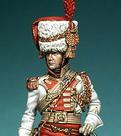Hanny
Posts: 422
Joined: 7/5/2011
Status: offline

|
quote:
ORIGINAL: tolsdorff
quote:
ORIGINAL: aspqrz02
...
Oh deer. Yes, horses can eat grass ... but horses doing heavy work need hay (which is not grass) and grain to be able to do heavy work ...
... like, oh, pulling supply waggons. Or artillery.
Please do some basic research before jamming your foot down your mouth.
Phil McGregor
I think you are mistaken here.
Hay is primarily grass, and often it is 100 % grass. Just dried.
Either the meadow is used to directly feed a horse, or this exact same field, with exactly the same plants on it, is allowed to grow long, it gets cut down, dried, and packaged.
There are stages in between as well. In dutch these in-between stages, are called Kuilgras, Voordroog and Koeienkuil. I do not know the english terms for them. Silage grass maybe.
Different grasses have different energies, but hay from a certain type of grass certainly does not have a lot more energy than the grass it used to be.
There is a lot more to feeding horses than just that, having owned 3 horses myself, but I will leave that to all the experts here.
Nope Phil was spot on.
Grass as fodder yields enough energy to sustain life, with little to no work involved, as calorie intake over 6 to 8 hours grazing equals required proteins etc, note the horse is doing nothing, so is unavailable for mil service, in fact they now need guarding as they are occupying each day a vast era, the good news is each day your moving to fresh grass, the bad news if you don’t, you have to move horses further and further to get grass to eat as they consume it quicker than grass grows. Shetland Ponies are small, as they evolved in the Orkneys on grass of poor to average worth, so they never reached their genetic potential.In the 1700s animal weight at slaughter at UK Smithfield’s rose dramatically as part of the agricultural revolution, as farmers now understanding how to feed an animal to reach its genetic potential, and grain became cheap enough to use as animal feed so you could work them harder longer.
Heavy work requires grain supplement as grass alone intake is insufficient to meet calorie output from hard work, a horse need 1% body weight roughly of grass to graze, but 2% of fodder and grain to perform heavy work, an acre of grass is as general rule enough for a horse a day to graze, 575kso 575000 acres a day to provide 16 lbs of for a 800 lbs horse, grass acres required is 6250 square miles of grass a week, and 1600 tons of grain supplement to cover the heavy work for a week, if you want to cut out the grazing time, you have to provide it as dry or fresh fodder, now you need twice the freight to get it, of course every opportunity was taken to minimise the freight cost by living if the land, but the grain ration cannot be done away.
Example from a google book page 225
J Norris, Logistics 1939 -1945 gives us a SU 24k 3 Rifle Div Corps, formation requiring 1000 t of grain and fodder, along with 1600 tons munition, 550 t fuel, so just under a third of freight was grain and fodder, when in contact wi the enemy.
German Rail QM loading manual, Rations supply trains.
Oats train, 90000 rations, 450 metric tons.
Full rations with fodder, full rations, 180000 human and 40000 animal, amounting to 454 metric tons.They ma be loaded in three parts, each containing 3 days supply for 20000 man and 4000 animals.
< Message edited by Hanny -- 3/31/2021 10:06:16 AM >
_____________________________
To strive, to seek, to find, and not to yield.
|
 Printable Version
Printable Version









 Check up on the Irish Kerry Gold butter system where they only make butter from the milk for 6 months of the year.
Check up on the Irish Kerry Gold butter system where they only make butter from the milk for 6 months of the year. 







 ) is that when animals forage for themselves, they wander all over the place. So no military unit is going to let their horses out to forage every day as rounding them up will take too long. If you keep them penned in closer, then there is not enough grass for all of them to feed properly.
) is that when animals forage for themselves, they wander all over the place. So no military unit is going to let their horses out to forage every day as rounding them up will take too long. If you keep them penned in closer, then there is not enough grass for all of them to feed properly. 
 New Messages
New Messages No New Messages
No New Messages Hot Topic w/ New Messages
Hot Topic w/ New Messages Hot Topic w/o New Messages
Hot Topic w/o New Messages Locked w/ New Messages
Locked w/ New Messages Locked w/o New Messages
Locked w/o New Messages Post New Thread
Post New Thread